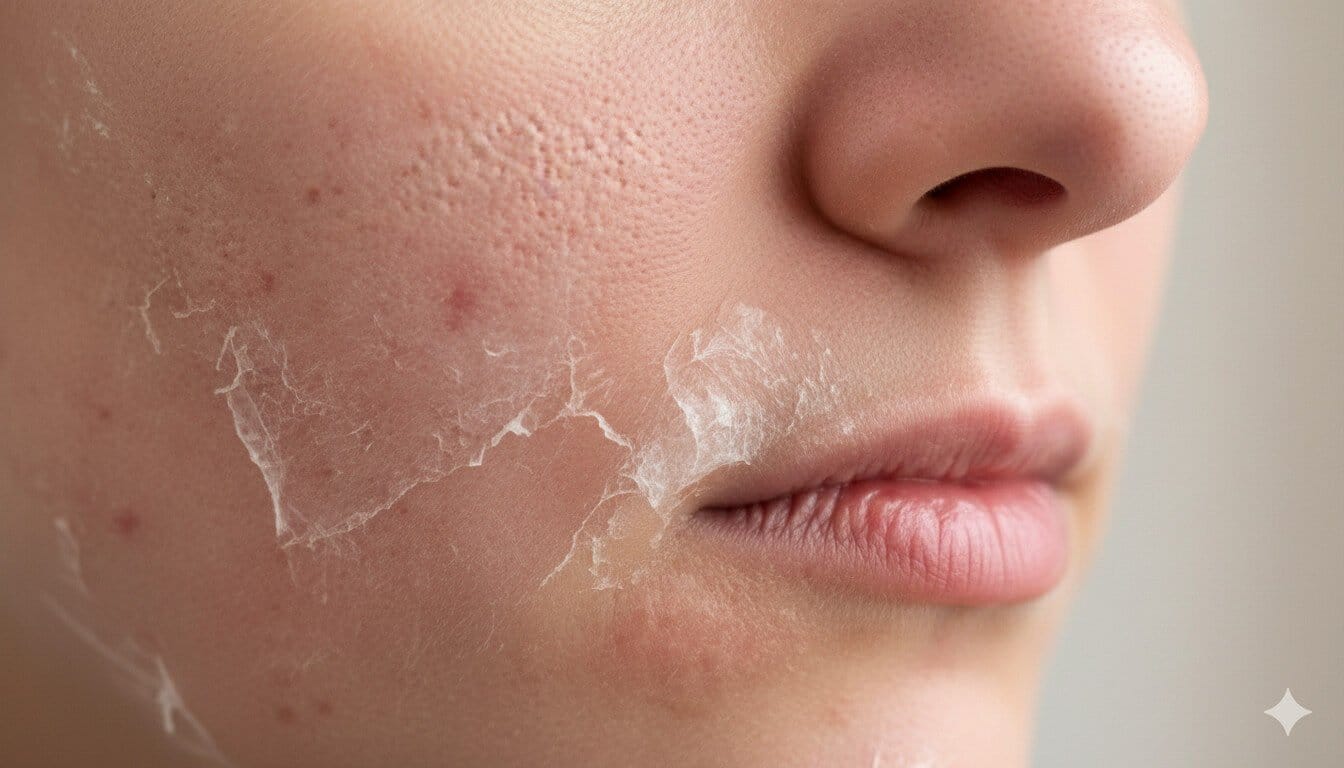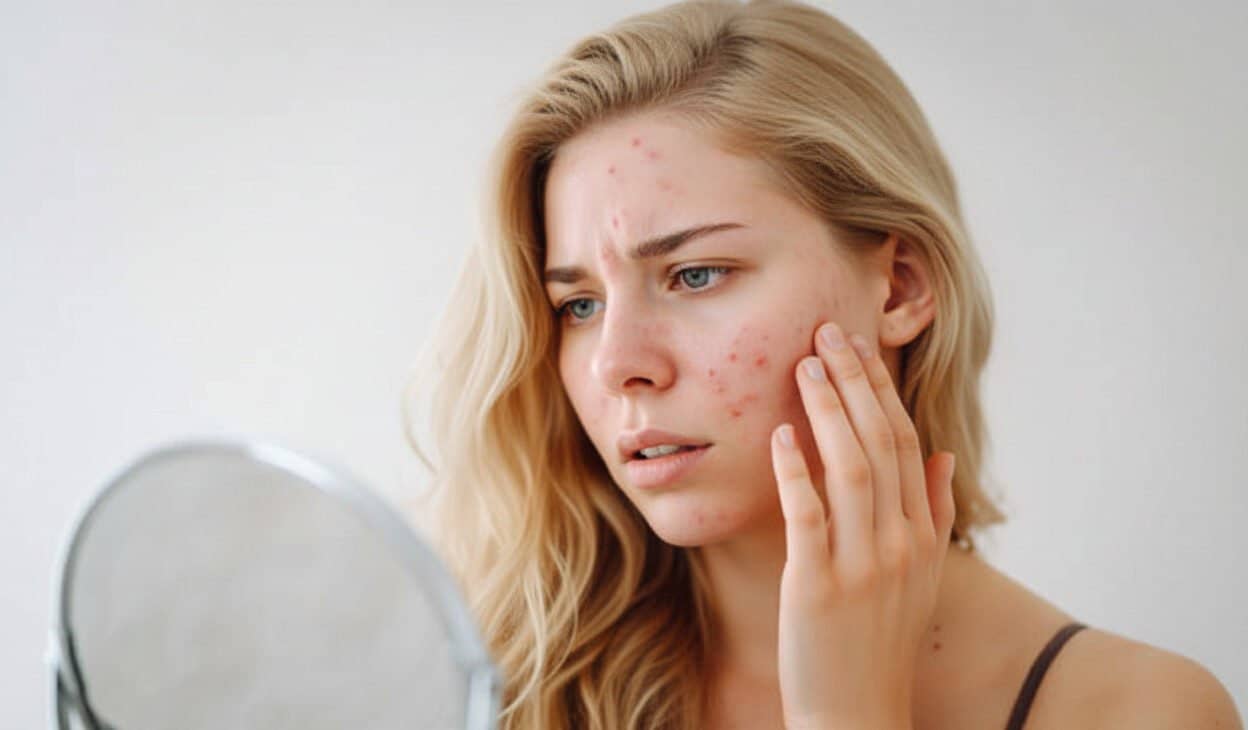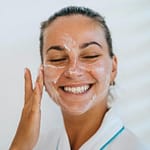
- Tips
- Tip 1: Wash Your Face Gently Twice Daily
- Tip 2: Apply Benzoyl Peroxide Carefully
- Tip 3: Use Salicylic Acid Treatments
- Tip 4: Hydrate with Non-Comedogenic Moisturizers
- Tip 5: Avoid Squeezing Cysts
- Tip 6: Choose Oil-Free Sunscreen and Makeup
- Tip 7: Use a Weekly Clay Mask
- Tip 8: Reduce Stress Levels
- Tip 9: Adopt an Anti-Inflammatory Diet
- Tip 10: Maintain Clean Bedding and Towels
- Importance
- How to Solve this issue?
- Brand Products to Use
- Natural Remedies
- FAQs
Cystic acne is a tough opponent, with its deep, painful, pus-filled cysts that can linger on your face, jawline, back, or chest. These inflamed bumps, unlike milder acne, form deep beneath the skin, making them hard to treat and prone to scarring. They’re often triggered by excess oil, bacteria, and hormonal changes, leaving you frustrated and self-conscious. The good news? You can tackle cystic acne with expert-backed, gentle methods that don’t rely on harsh treatments. In this guide, we share 10 top tips to treat cystic acne effectively, blending daily skincare, lifestyle tweaks, and natural remedies. Perfect for oily, sensitive, or combination skin, these strategies are beginner-friendly and practical. We’ll also include trusted products and answer common questions to help you achieve smoother, clearer skin. Let’s get started and banish cystic acne for good!
Tips
Tip 1: Wash Your Face Gently Twice Daily
Cystic acne feeds on oil, dirt, and bacteria clogging pores, worsening inflammation. Overly aggressive cleansers, however, can irritate skin and exacerbate cysts. Fix it: Use a gentle, non-comedogenic cleanser twice daily—morning and night. Massage a small amount for 30–60 seconds, targeting cyst-prone areas like the chin or cheeks, and rinse with lukewarm water to avoid stripping natural oils. For example, this prevents excess sebum production, which fuels cysts. Gentle cleansing reduces bacteria and keeps pores clear without aggravating sensitive skin, forming the cornerstone of an effective acne-fighting routine.
Tip 2: Apply Benzoyl Peroxide Carefully
Benzoyl peroxide targets acne-causing bacteria and reduces pus in cysts, but it can dry or irritate skin if misapplied. Fix it: Use a 2.5% benzoyl peroxide gel once daily, ideally at night, on cysts only. Apply a pea-sized amount and follow with a moisturizer to minimize redness. For instance, those with sensitive skin should start with every-other-day use to build tolerance. This treatment shrinks cysts by killing bacteria and reducing inflammation. Always wash hands post-application to avoid spreading the product, ensuring effective results without discomfort.
Tip 3: Use Salicylic Acid Treatments
Salicylic acid unclogs pores and soothes inflammation, making it a go-to for cystic acne. Overuse, though, can lead to dryness. Fix it: Apply a 1–2% salicylic acid serum 2–3 times a week after cleansing, focusing on cyst-prone areas like the jawline. Follow with a moisturizer to prevent irritation. For example, this dissolves oil and dead skin, reducing cyst size and preventing new ones. Use sunscreen daily, as salicylic acid increases sun sensitivity. This approach helps manage cysts gently while keeping skin balanced.
Tip 4: Hydrate with Non-Comedogenic Moisturizers
Dry skin can worsen cystic acne by triggering excess oil production, clogging pores further. Skipping moisturizer, even for oily skin, is a mistake. Fix it: Apply a lightweight, non-comedogenic moisturizer twice daily after cleansing. Choose formulas with hyaluronic acid or niacinamide to hydrate and soothe without blocking pores. For instance, gel moisturizers suit oily skin, while creams work for combination types. This reduces irritation around cysts, promotes healing, and prevents new breakouts by maintaining skin balance.
Tip 5: Avoid Squeezing Cysts
Squeezing cysts is a major no-no, as it pushes bacteria deeper, worsening inflammation and risking scars. Fix it: Leave cysts alone and use treatments like benzoyl peroxide or salicylic acid. For persistent cysts, see a dermatologist for cortisone injections or extractions. For example, this prevents permanent scarring and speeds recovery. Keep hands clean and avoid touching your face to minimize bacterial spread. Patience ensures cysts heal safely without long-term damage.
Tip 6: Choose Oil-Free Sunscreen and Makeup
Oily sunscreens or heavy makeup clog pores, aggravating cystic acne, especially in warm or sweaty conditions. Fix it: Opt for oil-free, non-comedogenic sunscreen (SPF 30+) and makeup labeled “for acne-prone skin.” Apply thinly after cleansing and remove makeup thoroughly at night. For instance, zinc oxide-based sunscreens protect without clogging pores. This reduces cyst triggers and prevents UV-related scarring. Always check labels for “non-comedogenic” to ensure products won’t worsen acne, keeping your skin clearer.
Tip 7: Use a Weekly Clay Mask
Clay masks absorb excess oil and calm inflammation, helping reduce cyst size and redness. Overuse, however, can dry out skin. Fix it: Apply a kaolin or bentonite clay mask once a week for 10–15 minutes on areas like the back or face. Rinse with lukewarm water and moisturize. For example, this draws out impurities and soothes deep inflammation without irritating cysts. Weekly use supports your routine, keeping pores clean and minimizing new cyst formation.
Tip 8: Reduce Stress Levels
Stress spikes cortisol, increasing oil production and inflammation, which fuels cystic acne. Fix it: Practice stress-relief techniques like meditation, deep breathing, or yoga for 5–10 minutes daily. For instance, try a breathing exercise: inhale for 4 seconds, hold for 4, exhale for 6. Additionally, journaling or a short walk can lower stress hormones, reducing cyst flare-ups. Managing stress not only helps your skin but also boosts overall well-being, making it a vital part of acne treatment.
Tip 9: Adopt an Anti-Inflammatory Diet
Dairy, sugary, or processed foods can trigger inflammation and oil production, worsening cystic acne. Fix it: Eat anti-inflammatory foods like berries, spinach, salmon, walnuts, and avocados. Drink 2–3 liters of water daily to hydrate skin and flush toxins. For example, omega-3s in fish and zinc in nuts reduce inflammation and aid healing. Limit dairy, a common acne trigger. This dietary change supports clearer skin and complements your skincare routine effectively.
Tip 10: Maintain Clean Bedding and Towels
Pillowcases and towels trap oil, bacteria, and sweat, transferring them to your skin and worsening cysts. Fix it: Wash pillowcases and towels weekly with a fragrance-free detergent. Use cotton or silk pillowcases, as silk reduces friction and oil buildup. For instance, clean bedding minimizes bacterial exposure during sleep. Avoid reusing towels without washing to prevent reintroducing bacteria. This habit supports your skincare efforts, reducing the risk of new cysts.
Importance
Understanding Cystic Acne
Cystic acne is a severe type of acne featuring deep, painful, pus-filled cysts beneath the skin. Unlike blackheads or pustules, cysts are tender, red, and prone to scarring, often appearing on the face, jawline, back, or chest. They form when pores clog with oil, dead skin, and bacteria (Propionibacterium acnes), leading to intense inflammation. Hormonal changes, stress, and poor hygiene are common triggers. For example, menstruation or stress can spike cyst formation, making consistent treatment essential.
Why These Tips Are Effective
These tips target cystic acne’s core causes: bacteria, inflammation, and clogged pores. Cleansing and clay masks clear debris, while benzoyl peroxide and salicylic acid combat bacteria and swelling. Non-comedogenic products prevent clogs, and diet and stress management reduce hormonal triggers. Therefore, this comprehensive approach shrinks cysts, prevents new ones, and minimizes scarring, offering a balanced strategy for long-term relief.
Benefits of Treating Cystic Acne
Treating cystic acne reduces pain, redness, and scarring, improving skin texture and boosting confidence. These gentle methods suit oily, sensitive, or combination skin, making them accessible. Moreover, consistent care prevents future breakouts and promotes healthier skin. By following these tips, you’ll see results in 4–8 weeks, achieving a clearer complexion without harsh chemicals or invasive treatments, which is crucial for managing severe acne.
How to Solve this issue?
Daily Skincare Routine for Cystic Acne
Use a gentle, non-comedogenic cleanser twice daily. Massage for 30–60 seconds on cyst-prone areas, like the jawline, and rinse with lukewarm water. Apply a lightweight moisturizer and SPF 30+ sunscreen every morning. Use a 2.5% benzoyl peroxide or 1–2% salicylic acid treatment 2–3 times a week at night, followed by moisturizer. For example, this keeps pores clear and reduces inflammation. Avoid harsh scrubs to prevent aggravating cysts, ensuring a gentle yet effective daily routine.
Weekly Maintenance Strategies
Apply a clay mask once a week for 10–15 minutes to absorb oil and soothe inflammation, rinsing with lukewarm water and moisturizing afterward. Avoid exfoliation, as it can irritate cysts; if needed, use a mild salicylic acid product once weekly. For instance, this minimizes irritation while supporting pore clarity. Weekly treatments enhance daily care, targeting cysts gently.
Lifestyle Changes to Support Skin Health
Wash pillowcases and towels weekly with a gentle detergent to reduce bacteria. Eat anti-inflammatory foods like berries, greens, and fish, and drink 2–3 liters of water daily. Practice stress-relief techniques, like meditation or yoga, for 5–10 minutes daily. Additionally, cleanse within 10–15 minutes after sweating to prevent pore clogging. These habits reduce cyst triggers and support healing.
Staying Consistent and Seeking Expert Help
Follow this routine for 4–8 weeks to see reduced cysts. Avoid squeezing to prevent scars. If cysts persist, consult a dermatologist for options like cortisone injections or prescription retinoids. Consistency is key, as cystic acne requires time to heal. For example, combining skincare with lifestyle changes maximizes results, helping you achieve clearer skin over time.
Brand Products to Use
These dermatologist-recommended products are effective for cystic acne:
- CeraVe Foaming Facial Cleanser ($10–15): A gentle cleanser with ceramides for acne-prone skin. Use twice daily to clean pores without irritation.
- Neutrogena Stubborn Acne AM Treatment ($10–15): A 2.5% benzoyl peroxide gel to shrink cysts. Apply once daily, followed by moisturizer.
- Paula’s Choice Clear Regular Strength Anti-Redness Exfoliant ($25–35): A 2% salicylic acid serum to unclog pores. Use 2–3 times a week.
- Cetaphil DermaControl Oil-Absorbing Moisturizer ($12–18): A non-comedogenic moisturizer with niacinamide. Apply daily to hydrate without clogging.
- Differin Adapalene Gel 0.1% ($12–15): A retinoid to reduce cysts. Use 2–3 nights a week with moisturizer (over-the-counter in many regions).
- EltaMD UV Clear SPF 46 ($30–40): A non-comedogenic sunscreen with zinc oxide. Apply every morning to protect skin.
How to Choose: Select products for your skin type—gel-based for oily, cream-based for dry. Test on a small patch to avoid irritation. Start treatments slowly and consult a dermatologist if cysts worsen or persist.
Natural Remedies
Try these home remedies to support your cystic acne treatment:
- Tea Tree Oil: Dilute 2–3 drops with a teaspoon of water or carrier oil. Dab on cysts, leave for 10–15 minutes, and rinse. Use 2–3 times a week to reduce bacteria.
- Aloe Vera Gel: Apply fresh aloe vera to cysts for 15–20 minutes, then rinse. Use daily to soothe inflammation and promote healing.
- Green Tea Rinse: Brew green tea, cool it, and apply with a cotton pad for 5–10 minutes. Use 2–3 times a week to reduce redness with antioxidants.
- Raw Honey Mask: Apply raw honey to cysts for 15 minutes, then rinse. Use weekly for its antibacterial and soothing properties.
- Turmeric Paste: Mix 1 teaspoon turmeric with water, apply to cysts for 10 minutes, and rinse. Use once a week to reduce swelling.
Caution: Test remedies on a small patch to avoid irritation. Avoid if allergic. Use alongside your routine for best results, but don’t overuse to prevent sensitivity.
FAQs
How long does it take to treat cystic acne?
Cysts may reduce in 4–8 weeks with consistent care. Severe cases can take 2–3 months to improve significantly.
Does squeezing cysts cause scarring?
Yes, squeezing worsens inflammation and risks permanent scars. Use treatments or seek dermatologist help instead.
Is benzoyl peroxide safe for sensitive skin?
It may irritate sensitive skin. Start with 2.5% strength, apply sparingly, and moisturize to reduce dryness.
Can diet trigger cystic acne?
Dairy and sugary foods can increase inflammation. Anti-inflammatory foods like fish and berries help clear skin.
Does stress worsen cystic acne?
Yes, stress boosts oil and inflammation, aggravating cysts. Daily meditation or yoga reduces flare-ups.
Are natural remedies enough for cystic acne?
They help soothe inflammation but work best with cleansing and treatments like salicylic acid for faster results.
When should I see a dermatologist?
If cysts persist after 8 weeks, worsen, or scar, consult a dermatologist for prescriptions or injections.
Subscribe to our newsletter!






